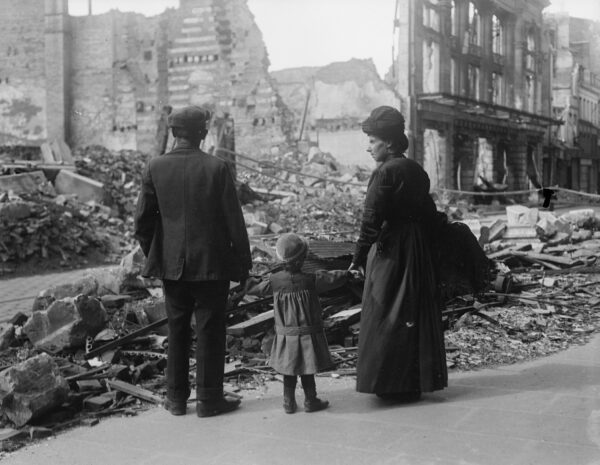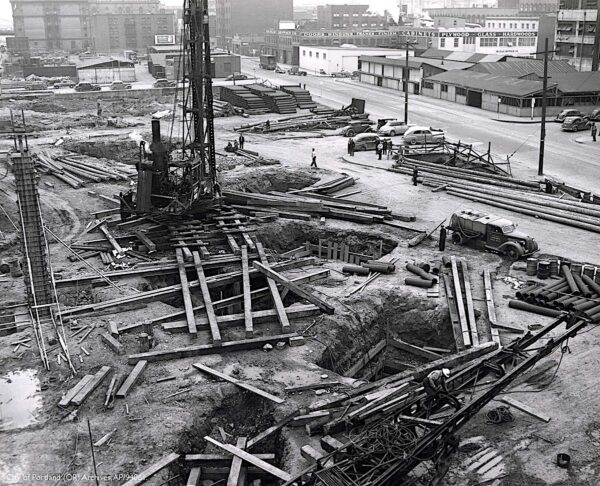Story building is something you learn through trial and error?
Or learn from graduate programs and writing conferences?
Or reading? Lots of Reading?
Don’t be shocked to think it’s all of that and more.
But, where to start? Why not the beginning?
In my early twenties I started a story that would be endless.
I worked for a construction company that specialized in commercial foundations.
They were the guys who came in after the trenches were dug for a new mall and cement poured in the bottom.
The new cement was called a ‘footing’ that spread the weight of the foundation blocks so they wouldn’t sag and crack.
I was the new guy with potential.
They started me out on the cement mixer, then hauling cement blocks from the pallet to the guys in the ditch.
I got promoted to hod carrier.
It was exhausting work for low pay. Luckily I was young and strong and had few expenses.
I could have been a mason if I’d stuck around, but my good sense said I was a bad fit.
The other guys at my level weren’t up the pace I set and resented my effort.
They were low energy for low pay, which made sense, but I had other priorities than slacking around middle-aged masons who knew what it took to get the job done.
When I gave them my notice they gave me a raise to stay.
I said I’d stay, but with conditions.
The first was firing the guys I worked with since I was doing their jobs and they got in the way.
“Well, we can’t do that. They’re my neighbor’s kids.”
They didn’t want someone who kept them supplied all day, who showed up on time ready to grind?
That was their story building failure, not mine.
Another Story Building Failure
From my over-eager construction experience I learned an important life lesson:
People don’t like to look bad and they hate the person making them look bad.
My take away?
I was the bad guy for making my co-workers look weak and lazy and stupid.
Why didn’t I adapt to them? Why would I?
Turns out my work-life had a lot in common with my personal life at the time.
Two failures racing to the finish line.
I had decided to get married with the best intentions. And then some.
I dropped out of college and moved across the country to start a happier life.
My partner had moved home after graduating and got caught up with old friends.
This old friend, that old friend. she was friendly.
We broke up in a friendly way after I made her look bad to her family.
They had a high bar for entry; the men who made it looked beat down by the up-beat women in the group.
I mentioned my observation at a family gathering.
One should never speak ill of dowdy men to the family matriarch. They don’t see it that way.
I think it was a class thing. I was lacking when I asked grandma to step back after she nosed into a conversation I was having with the intended:
“Why do all the men in your family look like they’ve had their souls crushed?” I asked.
“You two seem to be having a disagreement,” grandma said.
“Yes, ma’am, and we’re about to have another if we can’t finish this one,” I said.
To her granddaughter, “And this is who we’ve got to look forward to?”
‘Piss off, Grannie.’
I didn’t say that, but she got a whiff.
They had a team meeting that week, a family meeting, and I didn’t make the cut with the queens.
Maybe I’ve got a mommy-thing, or maybe, just maybe, I was seasoned enough back then to see the problem.
Was I the best man for their girl? Yes.
Was I the best man for the family traditions? Nope.
The Break-Up Pile
One day this will all be yours, they say.
What they don’t say? You won’t want it.
What you say, “Thank you.”
Every time I see a construction site it looks like a destruction site.
Maybe it’s just me, but one pile looks like another.
The difference is found in the surroundings. If everything is broken and laying in pile, it’s a bad thing.
But, if the surroundings are all intact, it’s a good thing.
How to tell the difference?
It takes careful observation.
Start with dirt.
Everything about Oregon started with dirt.
Natives knew dirt.
Farmers know dirt.
What about a kid walking around town?
Sometime in the near future a kid, a tourist, or some gawky transplant from North Carolina, will walk by an urban hole in the ground in downtown Portland.
They’ll see the extra layers of streets, ours included, pressed together like rings in a tree.
Will they feel the modern street level and sense the paths buried below; wonder at time peeling away what man adds on?
With some perspective they’ll grasp the roads of history, the super highways of science, and understand why anyone joins the turbulent social mix that produces a culture.
All it takes is the right dirt for the wonder to grow stronger.
What if the exceptionally motivated, the people who go all in, are denied the chance to sift enough dirt to see what holds meaning for them?
In spite of what you hear, there’s a huge wave of detail obsessed millennials about to demand more dirt.
It happens when you buy a particular house. You’ll need the old house plans, the area map, street history. You feel like breaking into a library when the urge to know everything hits.
And it’s normal.
Give people what they need when they look at a hole in the ground a city block wide and a city block deep.
Give them the Portland dirt.
Story Building Dirt
It can be messy, so keep that in mind. You may need a story building apron.
A good story is messy, but not on the page. Clean it up as you go, clean it up after you finish.
You can’t expect strangers to follow your train of thought?
Build your story to help.
Just know that the audience wants to hear the most embarrassing, shameful, thing you’ve ever done, the lies you’ve told, your reasons for robbery.
They want the love story that wins out against all odds, the one where Ali MacGraw doesn’t die.
Or the story of a great escape that Almost. Succeeds.
What about the story that begins with a careful shopper going to Costco?
It begins with overloading the cart, and getting attitude at check-out.
The middle shows the shopper placing things on the conveyor while the assistant checker tells them to leave certain items in the cart, putting them back off the conveyor and acting like the shopper is old and confused.
The end is when the shopper complies and watches the assistant checker pack bags with the crushable stuff on the bottom.
The shopper repacks and hears, “We’re swamped today. I need to pack your bags to make room.”
The shopper stops repacking and steps back.
While loading the goods in the car:
Man: Check the receipt and see if they charged us for the green jeans.
Woman: Why?
Man: They were really busy. Maybe we got charged twice?
Woman: No green jeans.
Two days later:
Man: Okay, I’m going to Story Class.
Woman: You look nice. Are those new jeans?
Man: No.
Woman: You don’t have any green jeans.
Man: I do now.
Woman: Did you . . .
Man: Steal them? Did I steal them? No.
Woman: Are you sure? We don’t need another Pony Village problem.






